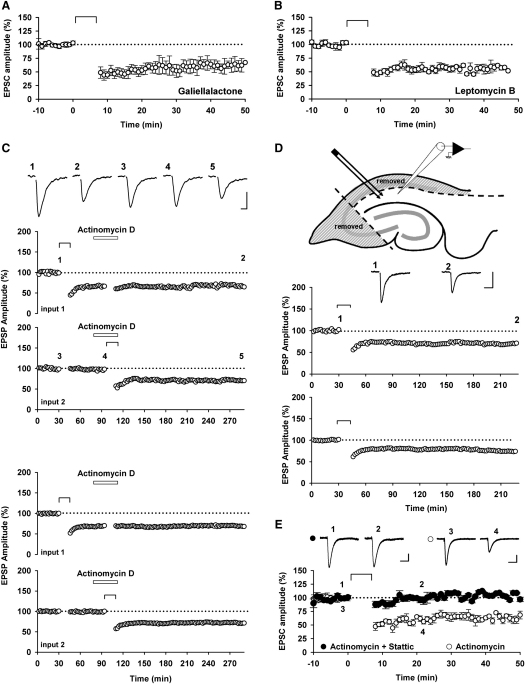Figure 7.
Translocation of STAT3 to the Nucleus Is Not Necessary for NMDAR-LTD
(A) Pooled data of EPSC amplitudes in whole-cell patch-clamp recording showing that NMDAR-LTD can be induced in presence of galiellalactone (50 μM; n = 5), a STAT3 inhibitor which block its binding to DNA.
(B) NMDAR-LTD can also be induced in presence of leptomycin B (50 nM; n = 6), a blocker of nuclear translocation.
(C) Experiments performed with field-recording, as in Figure 1, show that actinomycin D (25 μM) does not block pre-established NMDAR-LTD or the induction of NMDAR-LTD even 3 hr after induction (n = 4). Calibration bars: 0.5 mV/20 ms.
(D) Experiments performed with field-recording in slices where the cell bodies have been removed, as shown on the diagram, showing that the nucleus is not required for the induction of NMDAR-LTD (n = 5). Calibration bars: 0.5 mV/40 ms.
(E) Stattic (50 μM) can still block the induction of NMDAR-LTD even in presence of actinomycin D (25 μM), a transcription inhibitor (n = 5 for both conditions). Calibration bars: 25 pA / 40 ms.

